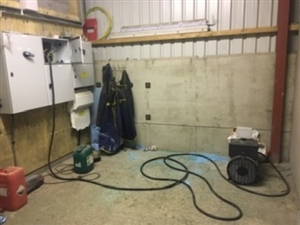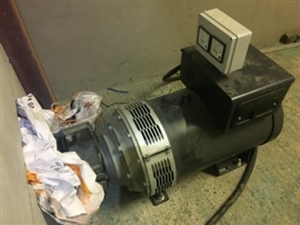

davezawadi (David Stone):
Hugh
Did you say that alternator is 60 kVA, because I think not!
That was my thought - it doesn't look big enough. However, it is difficult to get a good idea of scale from those photographs. As far as I can see from examples on line, the casing would be around 3 ft in diameter and that one looks smaller; but I don't doubt what Baldyhugh says.
If the alternator is connected by SWA all neatly cleated to the floor and wall, is there any realistic chance of a fault or short? If there were one, would those fixing bolts withstand the force?


We're about to take you to the IET registration website. Don't worry though, you'll be sent straight back to the community after completing the registration.
Continue to the IET registration site